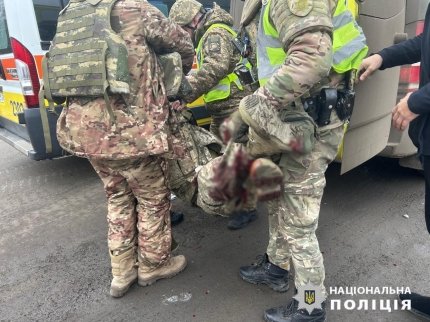Russian occupiers used a Molniya-2 drone to strike Kupyansk in the Kharkiv region. Three police officers and two civilians were injured as a result of the shelling.
Points of attention
- Russian occupiers struck Kupyansk in the Kharkiv region with a Molniya-2 drone, injuring three police officers and two civilians.
- Ukrainian air defense successfully shot down 72 enemy drones and stopped another 59 drones launched from the Russian Federation.
- Russia's massive attack on Ukraine included the launch of 131 attack drones and the firing of four Iskander ballistic missiles.
- The affected facilities in Poltava and Cherkasy regions require liquidation of the consequences of the strikes. There are no victims or injured people yet.
- Special services are working to document the Russian Federation's war crime and collect physical evidence regarding the attack on Kupyansk.
Russian Molniya drone attacked Kupyansk
According to the Kharkiv region police, at around 9:00 a.m. on January 21, the invaders attacked the UAV of Ukrainian law enforcement officers who were on duty in Kupyansk.
As a result of the explosion, three police officers received shrapnel wounds of varying severity and are receiving medical attention. A police car was also damaged.

In addition, a hostile drone attacked a civilian car. A 64-year-old woman and her 68-year-old husband, residents of the city of Kupyansk, were injured.

An investigative and operational group is working on site, documenting the Russian war crime, conducting an inspection of the scene, and collecting physical evidence.
Massive Russian attack on Ukraine: air defense forces destroy 72 enemy drones
According to the military, on the night of January 21, the Russian army carried out a massive attack on Ukraine, launching 131 attack drones from the directions of Millerovo, Orel, and Primorsko-Akhtarsk in the Russian Federation.
In addition, the occupiers struck with four Iskander ballistic missiles launched from the Voronezh region.
Ukrainian air defense was able to shoot down 72 enemy drones, and another 59 drones lost location communication and did not reach their targets.
As a result of enemy strikes in Poltava and Cherkasy regions, infrastructure facilities, outbuildings, and private homes were damaged. Special services are working to eliminate the consequences. According to preliminary information, there are no victims or injured.









